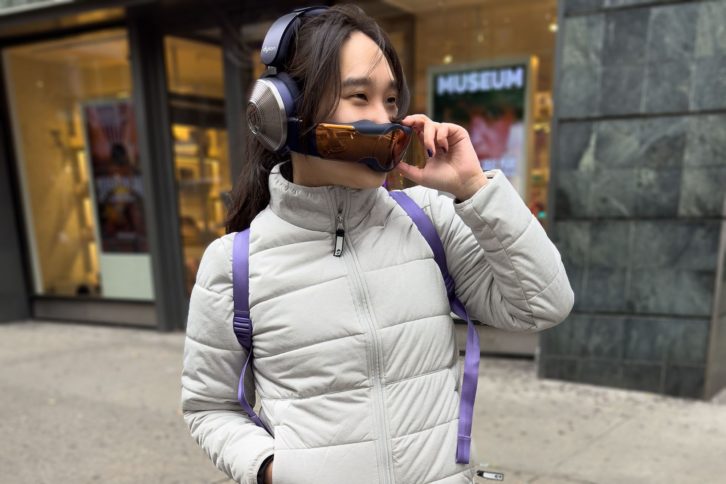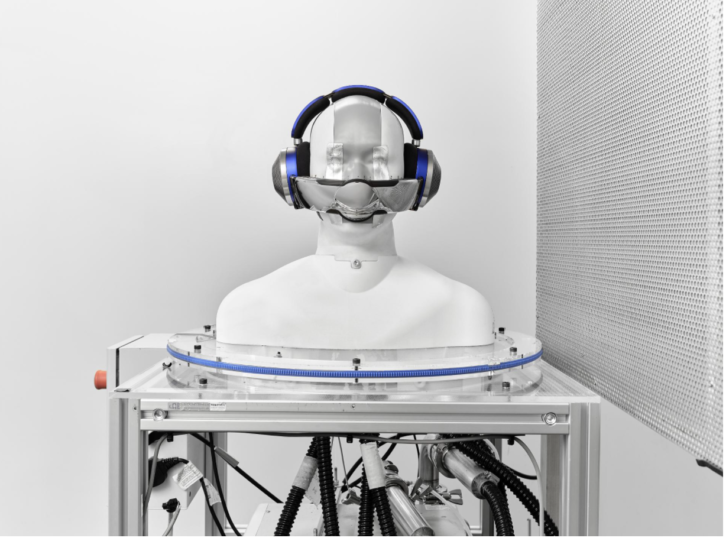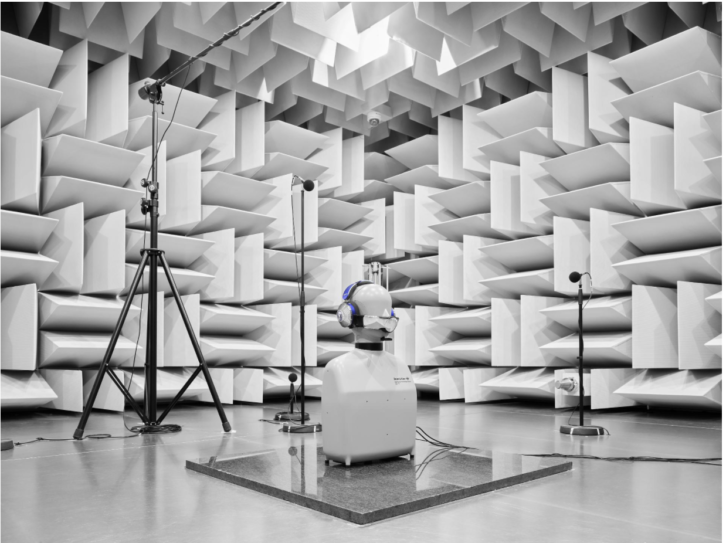
The tech and wearable world have been waiting to get their hands on the enigmatic Dyson Zone with bated breath, and now that reviewers have started to share their experiences with the air-purifying headphones, a wealth of information is starting to trickle in. Chief among these are the staggering price of the headphones- $949 for the model with no add-ons or attachments. Is it worth it? The jury is out, but some reviewers definitely see the appeal. The device features Dyson’s innovative design philosophies– the motor and filters for the air purifier are housed in the ear cans, and the mask snaps on magnetically. Some reviewers have had trouble with attaching the mask to the headphones, but everyone seems to agree that the product is of high quality, the headphones sound good and have powerful ANC, and the mask does a great job of comfortably filtering out environmental pollutants. The price will obviously be a barrier for many, but I could see these becoming a very hot luxury item in parts of the world dealing with high levels of air pollution. The product also pairs with a Dyson phone app that gives real-time information about air pollutant areas wherever you are. Here’s what people are saying:
To see if the Zone would be comfortable enough for me to wear on a long flight, which is how I believe most people would want to use it, I laid out on a couch with the entire device on. It wasn’t terrible. We also got to check out the companion app and see a live chart showing the sound levels in our surroundings. As a reminder, the Dyson Zone is not designed to protect against COVID-19 or other viruses. It does not seal to your face, even if the visor does cover your nose and mouth. It does leave the chin exposed, and there’s a gap between the device and your skin. You can use inserts like an N95 mask attachment that the company offers as part of a package, but on its own the Zone is only getting rid of particles and acidic gasses like nitrogen dioxide and ozone. (MORE@ENGADGET)
See also: Displace teases strange wireless TV ahead of CES
There’s no doubting you can feel its presence – the word featherlight wouldn’t be an apt description for these headphones – but they also don’t feel cumbersome. The clamping force is tight but not onerous and wearing them for around 30 minutes, I got used to it. Those with smaller heads may find that the size simply envelopes their heads but in light of the wealth of technology that Dyson has fitted into the earcups alone, it’s impressive they feel this comfortable at all. (MORE@TRUSTEDREVIEWS)

According to Dyson, the Zone can reduce noise by about 40 decibels — 38 decibels from the headphones’ ANC tech and an additional two decibels from just putting on the headphones. It was impressive in a quiet office, but it was even more so while on a busy New York City street. With ANC on, I could barely hear the hustle and bustle of the city around me. Car motors, people yammering on cellphones, and just everyday sounds went quiet. I could still hear aggressive cabbies honking and a passing fire truck — but they didn’t hurt my ears as much as they usually do. (MORE@THEVERGE)
The filters used in the cans use a new manufacturing process that utilizes electrostatic filter media to negatively charge the dual-layer filters, actively attracting particles and other pollutants in the air to the filters. Dyson claims this can filter 99% of the particulates in the air down to 0.1 microns, and that includes harmful gases including nitrogen dioxide, sulphur dioxide and ground-level ozone, not filtered with traditional particulate filters. (MORE@TECHADVISOR)

For that eye-watering price, you’ll be getting 8-10 mic active noise canceling (ANC), depending on whether you have the air purifier on, and a promised 50 hours of battery life. Running the purifier drastically shortens that lifespan to 1.5 – 2.5 hours, depending on its speed. But the benefit you can’t put a price on, the piece de resistance here, is the Bane cosplay that comes with the detachable air purifier. It works with filters in the ear cups to push fresh air into your mouth and nose at 10,000 RPM as you confront your nemesis, Batman. (MORE@GIZMODO)
See also: Researchers create prototype capable of sending and receiving tactile sensations
Two days ago, (so not on April Fools), Jake Dyson officially debuted his dystopian noise-cancelling, air-purifying ear-and-face mask. I will first say that noise-cancelling and air-purifying are two of my favorite things and as a migraine sufferer if they could add a built in ice-pack and eye shade I would be grateful. However. The hardest thing to face about this product (for your face) is the compelling need it tries to meet–protection from the ever-increasing global noise and air-pollution. Given the years of R&D that went into it the irony of coming out with the most extra face mask is probably a total coincidence of timing. Unlike many products that charged onto the market to help with pandemic, the Zone appears to be something Dyson thought was important to human survival even before Covid. In California where I live, this comes too little to late for the #1 demographic for this kind of thing–gardeners driving gas-powered leaf blowers. I’m sure they were factored in the business plan, so there will need to be some adjusted forecasts now that one of the most ubiquitous sources of noise and noxiousness is banned (but still widely in use I notice here in Cali.)
Here’s how Dyson announced it:
Today, Jake Dyson has unveiled the Dyson Zone™, Dyson’s first step into wearable technology. The Dyson Zone™ is a set of noise cancelling, high fidelity over-ear headphones which simultaneously deliver immersive sound to the ears, and purified airflow to the nose and mouth. The result of over a decade of air quality research and development, the Dyson Zone™ air-purifying headphones simultaneously tackle the urban issues of air quality and noise pollution.
As the world’s urban population continues to grow, the World Health Organization (WHO) estimates that 9 in 10 people globally breathe air that exceeds WHO guideline pollutant limits [1]. Where NO2 pollution in cities decreased during the Covid-19 pandemic [2] , levels have quickly returned to normal, or exceeded pre-pandemic levels across many global cities [3]. It is estimated that more than 100 million people, around 20% of the European population, are exposed to long-term noise exposure above WHO guidance [4].
6 years & 500 prototypes
 The Dyson Zone™ air-purifying headphones are borne of Dyson’s 30 years of expertise in airflow, filtration and motor technologies and deep understanding of indoor and outdoor air quality. The compressors in each earcup draw air through the dual-layer filters and project two streams of purified air to the wearer’s nose and mouth, channelled through the non-contact visor. Sculpted returns on the visor ensure the purified airflow is kept near to the nose and mouth and diluted as little as possible by external crosswinds. The Dyson Zone™ delivers rich, immersive audio and relief from unwanted city noise thanks to advanced active noise cancelling (ANC), low distortion and a neutral frequency response, to faithfully replicate music or audio as the creator intended.
The Dyson Zone™ air-purifying headphones are borne of Dyson’s 30 years of expertise in airflow, filtration and motor technologies and deep understanding of indoor and outdoor air quality. The compressors in each earcup draw air through the dual-layer filters and project two streams of purified air to the wearer’s nose and mouth, channelled through the non-contact visor. Sculpted returns on the visor ensure the purified airflow is kept near to the nose and mouth and diluted as little as possible by external crosswinds. The Dyson Zone™ delivers rich, immersive audio and relief from unwanted city noise thanks to advanced active noise cancelling (ANC), low distortion and a neutral frequency response, to faithfully replicate music or audio as the creator intended.
Originally a snorkel-like clean air mouthpiece paired with a backpack to hold the motor and inner workings, the Dyson Zone™ air-purifying headphones evolved dramatically over its six years in development. More than 500 prototypes saw one motor initially placed at the nape become two compressors, one in each ear-cup and the evolution of the snorkel mouthpiece into an effective, contact-free visor that delivers clean air without full-face contact – a brand-new clean air delivery mechanism.
Developing a non-contact solution was a must for Dyson engineers, to avoid the discomfort and irritation often associated with full-contact alternatives. The visor, therefore, was a critical element. The airflow pathways and visor design are central to delivering pure air. The geometries of the visor and the visor returns, alongside the central mesh that diffuses the two jets of airflow, ensure that the purified air exiting the filters is effectively delivered to the nose and mouth in crosswinds, and for the wearer’s specific facial shape. Going beyond existing testing methods, Dyson engineers use a breathing manikin fitted with medical-grade mechanical lungs and sensing equipment, which ‘inhales’ pollution replicating human breathing patterns in a controlled chamber. They then measure the pollution level within the nose and throat to determine the filtration efficacy of those particles which would otherwise end up in Frank’s artificial lung.
Precision-engineered compressors within the earcups draw air through the dual-layer filters, intelligently designed to fit within the considerable space constraints of a headphone. The negatively charged electrostatic filter media captures ultrafine particles such as allergens, and particles from sources such as brake dust, industry combustion and construction whilst a potassium-enriched carbon layer captures city gas pollutants like NO2 and SO2. The compressor channels the purified air to the wearer’s nose and mouth via the contact-free visor, formed with flexible returns that channel the flow of purified air to the wearer’s nose and mouth.
 A scientific approach
A scientific approach
A first foray into the world of audio, Dyson engineers took a scientific approach, choosing not to rely on a ‘golden listener’ approach that many others do. Dyson’s team of audio engineers and acousticians sought to engineer excellent audio led by metrics, backed up with extensive listening trials. The result: pure, rich audio and advanced noise cancellation. Despite the space constraints inherent with a wearable device, Dyson engineers developed a high performing neodymium electroacoustic system within each earcup. A wide frequency response, precise left-right balance and distortion significantly below what can be detected by the human ear, offer a faithful reproduction as the musicians or creators intended.
Through solving a problem of Dyson’s own creation, the engineers have developed an advanced noise cancellation system. Together, the device’s passive attenuation and the ANC, with its unique array of microphones, reduce unwanted environmental noise and motor tones to provide advanced noise cancellation at home, at work and on-the-go. Large, angled ear cushions mold around the listener’s ear, with a foam density and headband clamp force engineered specifically for both comfort and optimal noise reduction.
Engineered for comfort
Every head on the planet is unique. As Dyson’s first wearable, Dyson engineers had to think about comfort in a new way. Detailed research into head and face geometries meant engineers could measure how the Dyson Zone™ air-purifying headphones would sit on and perform on different heads – informing the clamp force of the headband, the geometry and materials of the visor, the adjustability of the machine and much more.
Taking inspiration from the shape and design of a horse’s saddle, the Dyson Zone™ is engineered to distribute weight over the sides of the head, rather than on the top. A saddle typically curves over the horse’s spine distributing the load through contact with the areas left and right of the backbone – a format used for the central cushion on the headband.
The development of the ear cushions is important for three reasons: comfort, on-head stability and passive attenuation. Foam is an obvious choice for ear cushions, but Dyson engineers dug deep into the make-up of different foams to choose the most suitable material based on density, rate of compression and spring-back rate – all of which change the way pressure translates onto the head. When choosing the optimal foam for the ear and headband cushions, it was important to balance the comfort it provides, its stability when molded to the ear, but critically the acoustic benefit it provides. Molding around the ear increases the size of the contact points providing better sealing – and inhibiting additional urban noise entering the ear. The cushion is purposefully flatter than conventional ear cushions for both attenuation and comfort, and the cushions are angled in line with the angle of the ear on the head for optimal comfort.
A global effort
The Dyson Zone™ air-purifying headphones have been engineered by teams across the UK, Singapore, Malaysia and China, with a particular focus on software on our Southeast Asia campuses. The app development and integration was a critical project to ensure a smooth connection journey and provide intelligent, meaningful air and noise pollution tracking features. Robustness and durability are central to a product that leaves the home with the wearer. As with all Dyson machines, the Dyson Zone™ air-purifying headphones have been tested to the extremes – in temperature-controlled chambers, drop-testing, material and fabric wear testing, button robustness and much more. Our expert test engineers in the Dyson Malaysia Development Centre are integral to this, as is the geography – putting it through its paces in warmer climates and higher humidity compared to UK-based testing.
The Dyson Zone™ air-purifying headphones will be available online and in-store at Dyson Demo Stores and Dyson.com starting Autumn 2022. Timings will vary by geography. Full product specification and further details on availability will be announced in the coming months. Sign up for updates on this product here.










